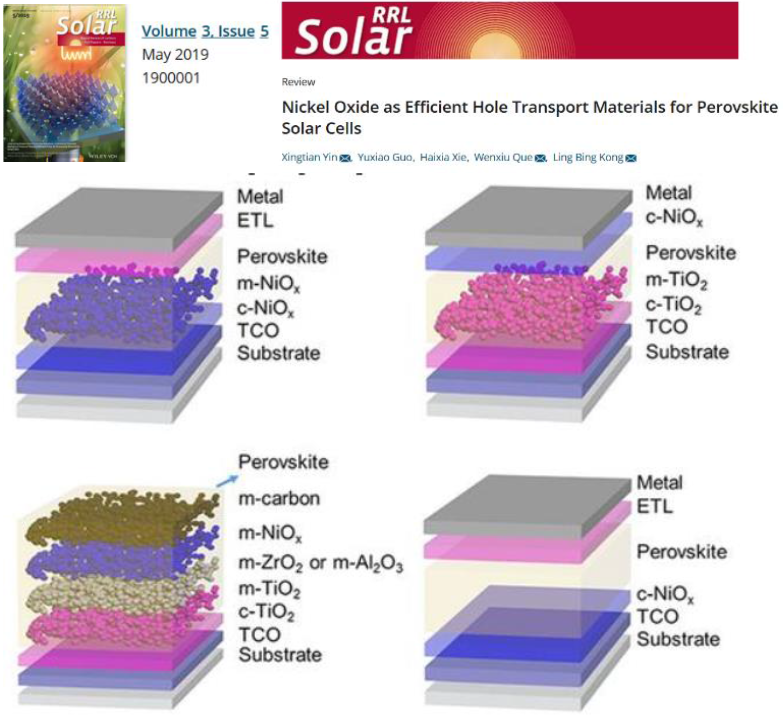我校孔令兵教授以第二单位及共同通讯作者身份携手西安交通大学在国际著名出版社Wiley新创期刊刊登题为“Nickel Oxide as Efficient Hole Transport Materials for Perovskite Solar Cells” (RRL Solar, 3 [5], 1900001 (2019))的综述文章,系统总结了钙钛矿太阳能电池中空穴传输材料氧化镍的最新研究进展。

Organic–inorganic halide perovskite solar cells (PSCs) have achieved great success in recent years with a demonstrated power conversion efficiency (PCE) increasing rapidly from 3.8% to 22.3% for single junction devices. Most high‐performance PSCs consist of a perovskite absorber sandwiched between an electron transport layer (ETL) and a hole transport layer (HTL), which extracts electrons (holes) and blocks holes (electrons) from the absorber efficiently. Inorganic hole transport materials have extracted extensive attention due to their higher mobility and better stability. Particularly, the excellent hole selective transport property of nickel oxide (NiOx) has been highlighted by its recent application in organometallic halide PSCs, due to the favorable band alignment formed between the halide perovskite absorber and NiOx HTL. This comprehensive review summarizes the recent progress in the fabrication of NiOx films and their application in PSCs. Special attention is paid to the optoelectronic properties of NiOx films, which strongly depend on the synthesis methods and post‐treatment conditions, as well as the resulting photovoltaic device performance. Surface modification and doping strategies that are used to improve the optoelectronic properties of NiOx films and the resulting device performance are discussed with emphasis. Finally, a short perspective of NiOx‐based PSCs is also provided.